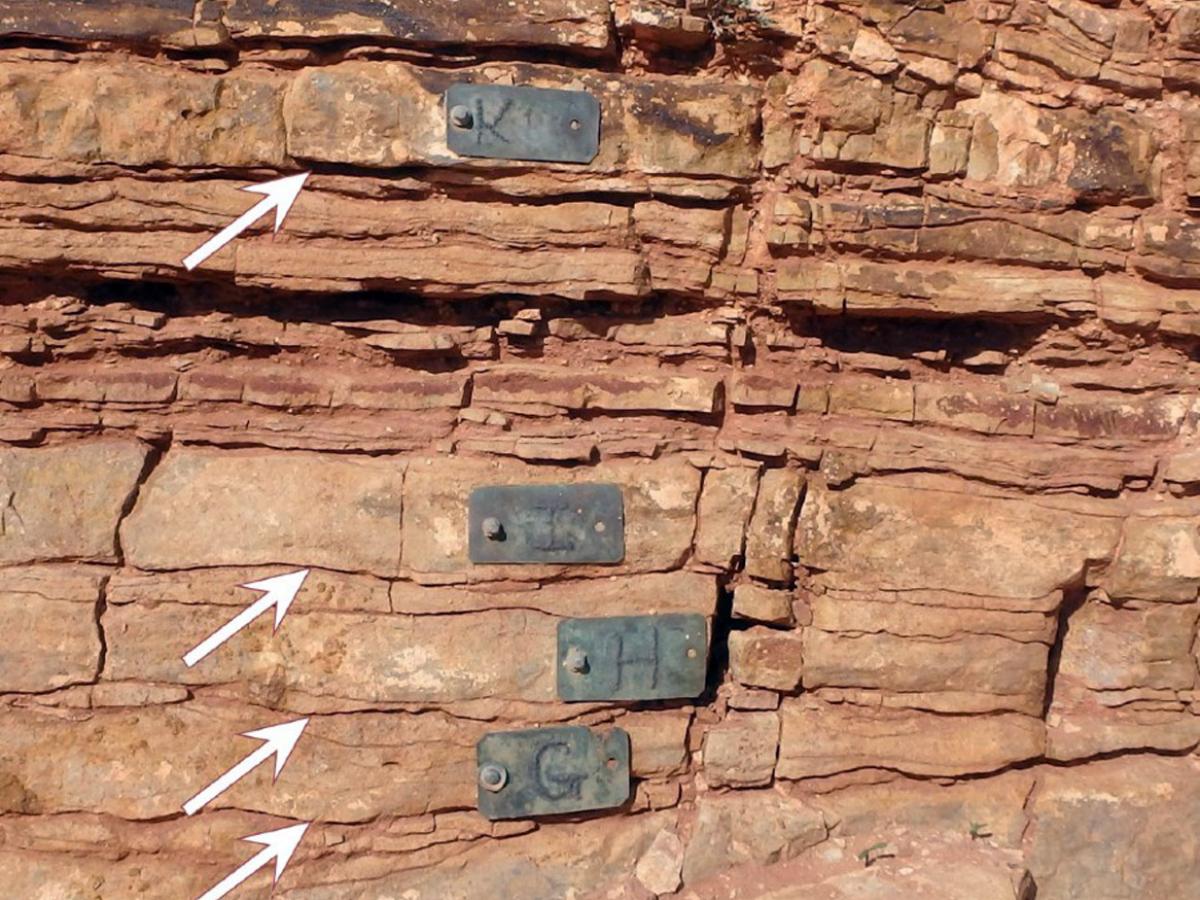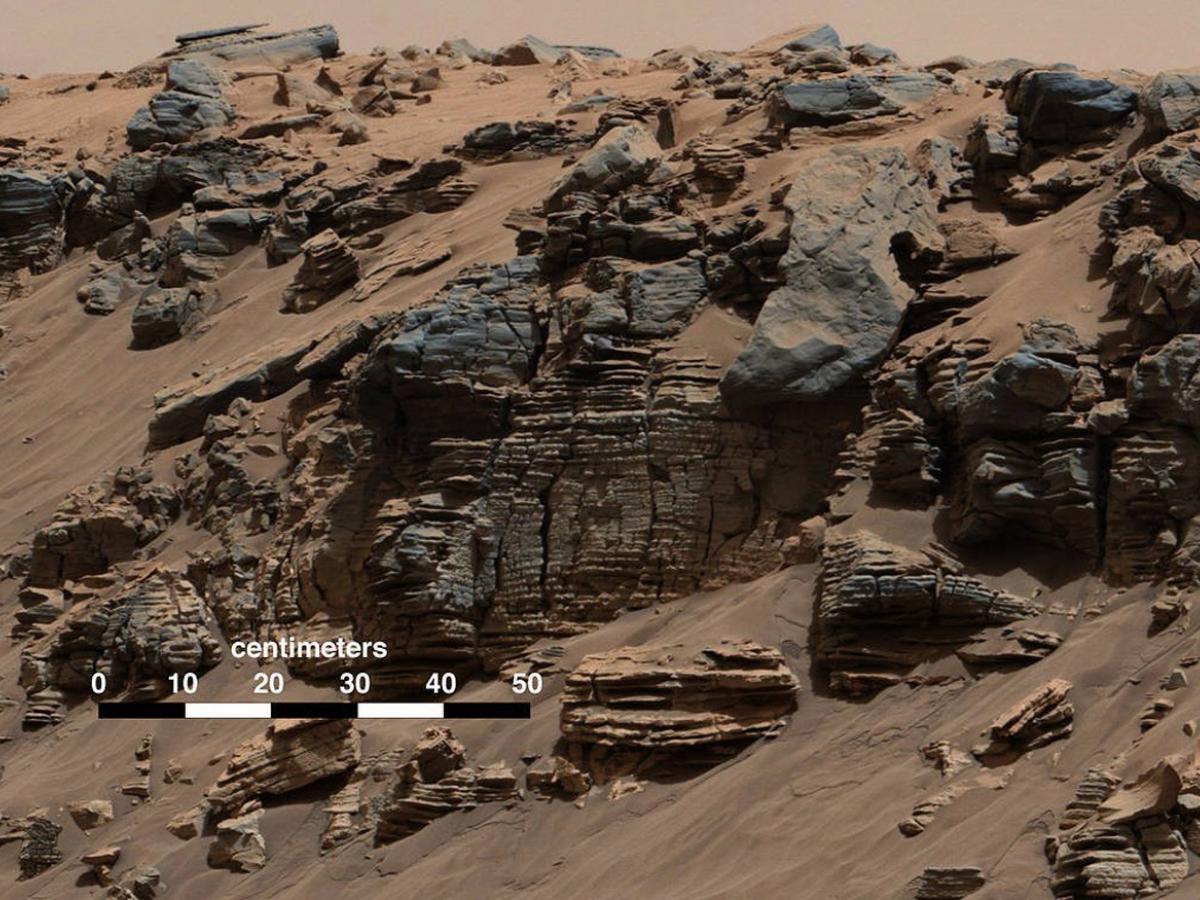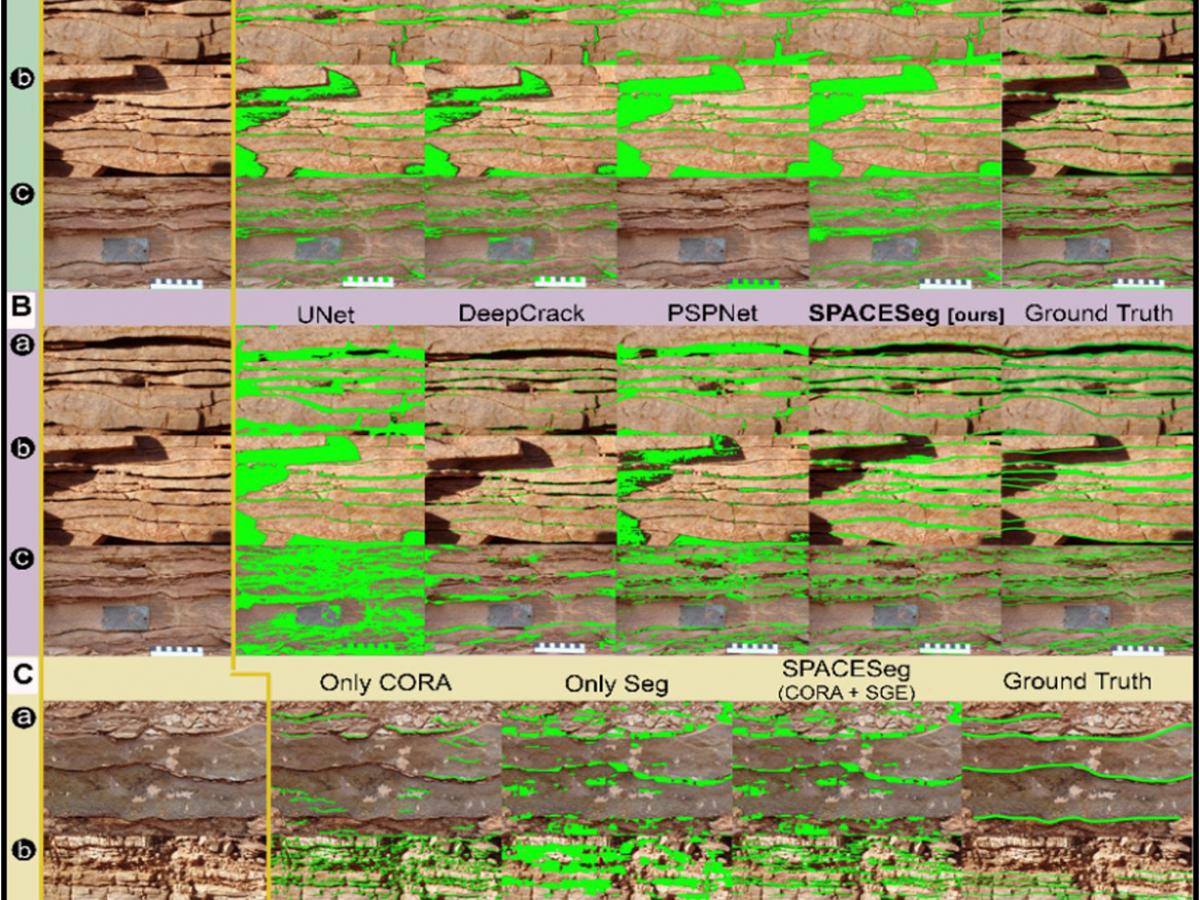Examining Earth’s oldest complex fossils using AI

Detail of Nilpena quarry fossil beds with arrows indicating presence of fossilised matgrounds. (Image credit: Mary Droser)
University of Adelaide scientists will develop computer vision and machine-learning techniques to examine the fossil evidence of the Ediacara Biota – the earliest evidence of complex life.
A NASA grant of more than US$ 300,000 (AUD $410,000) has been awarded to an international team led by Distinguished Professor Mary Droser from the University of California–Riverside and Associate Professor Diego C. García-Bellido from the University of Adelaide’s Environment Institute, and the South Australian Museum.
The three-year project, funded by the Exobiology Program at NASA, will start in January 2022 in the recently declared Nilpena Ediacara National Park.
The project aims to develop computer vision and machine-learning techniques to examine the fossil evidence of the Ediacara Biota – the earliest evidence of complex life – to validate the use of the computer algorithm, Scene-aware Perception Automation using Composite Embedding for Segmentation (SPACESeg) for these types of strata.
“We will use SPACESeg to help us detect the presence, and quantify the growth, of the fossilised matgrounds – microbial layers covering the seafloor – based on images of bedding planes as well as successive beds in cross-section,” explained Professor García-Bellido.
“We plan to analyse sedimentary structures resulting from these widespread fossilised organic mats to recognise biotic signatures on Earth. The ultimate goal, but probably some years into the future, is to establish reliable protocols for the remote detection of similar biotic structures in other planets, and apply them to images like the ones being brought back from the surface of Mars by NASA's Curiosity rover.”

Sedimentary layers in Mars photographed by Curiosity rover (Credit: NASA/JPL-Caltech/MSSS).
The Nilpena Ediacara National Park which contains some of the oldest animal fossils in the world is an important part of the UNESCO Flinders Ranges World Heritage Nomination.
“This new National Park is renowned for preserving the most diverse assemblage of the oldest complex, multicellular life on our planet,” said Professor García-Bellido.
“These early organisms lived in warm, shallow waters on the east coast of mainland Australia, over half-a-billion years ago, when our continent was straddling the equator.
“The shallow, tropical waters over what is now Nilpena were teeming with life. Most conspicuous among them are the iconic elements of the Ediacara Biota like Dickinsonia, Tribrachidium and our South Australian Fossil Emblem, Spriggina,”

Newly developed SPACESeg algorithm applied to Ediacaran beds to detect bed junctions and possible mat-grounds (Credit: Droser et al.).
There was an essential component that allowed these larger fossils to be preserved, that sometimes gets overlooked, the microbial matground which covered the seafloor over which these complex organisms lived.
“This single-celled, microbial life reigned in our planet for the first three billion years. If we were to visit Earth at a random point in time, we would not find the diversity and complexity of macroscopic life that we see around us today but rather these organic matgrounds of primarily microscopic forms,” said Professor García-Bellido.
The matgrounds are easily identified as fossil textures in the Ediacaran horizons deposited 555 million years ago but did not survive once animals became widespread with the Cambrian explosion, which brought a radiation of very active grazers that forever “closed the window” into the Ediacara biota.
